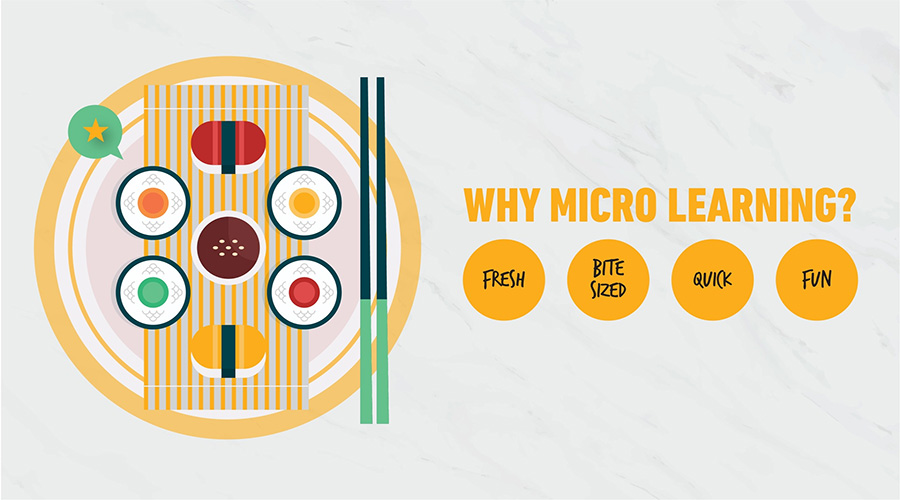How to Learn a New Skill Daily with Microlearning?

Most of us have experienced it: starting a lengthy training course, buying a hefty book to learn a new skill, or signing up for a class that requires hours of commitment. But how many of us actually see it through to the end? Here's an interesting statistic: research shows that completion rates for traditional training courses are often low, with many people abandoning them due to overwhelming content and lack of time. This is where Microlearning comes into play. It breaks learning into small, digestible "bites," allowing you to achieve significant learning outcomes with minimal time. This article will show you how to make your learning journey smoother with this innovative approach.
Table of Contents
- Why Do We Need Microlearning?
- What is Microlearning? A Deeper Understanding of a New Approach
- Benefits of Microlearning: Why Should We Take It Seriously?
- How to Implement Microlearning in Your Life: A Practical Guide
- Conclusion: The Future of Learning in Small Bites
Why Do We Need Microlearning?
In today's busy world, finding enough time for continuous learning has become a significant challenge. Between daily tasks, family responsibilities, and various hobbies, there's often little time left for traditional, lengthy training courses. Moreover, our attention spans have decreased, and with the vast amount of information we encounter daily, processing and retaining knowledge has become more difficult than ever. These time constraints and challenges in maintaining focus highlight the need for newer, more efficient learning methods.
This is where Microlearning steps in to address these needs. This approach divides educational content into very small, manageable chunks, typically lasting 2 to 10 minutes. Each chunk focuses on a specific learning objective, allowing you to gain knowledge easily during short breaks, commutes, or waiting periods. Microlearning helps us tackle modern learning challenges and stay continuously updated and educated.
What is Microlearning? A Deeper Understanding of a New Approach
To fully benefit from microlearning, understanding its definition and key features is essential. This section will help you gain a clearer picture of this concept.
Definition of Microlearning and Its Key Features
Microlearning refers to learning content in small, targeted, and manageable pieces, typically designed to deliver a single concept or skill.
- Short and Focused: Each piece of content focuses on one key point or skill, usually lasting between 2 to 10 minutes, though it can be shorter or slightly longer.
- One Learning Objective per Segment: Each "bite" of learning has a specific outcome, such as "how to use a specific filter in software" or "understanding a key economic concept."
- Diverse Formats: Microlearning can be delivered in various formats, including short videos, infographics, brief podcasts, quizzes, flashcards, concise articles, or even daily educational emails. This variety enhances its appeal and effectiveness.
- Easy Access: Microlearning content is often available through mobile platforms, apps, and websites, making it accessible anytime, anywhere. This ease of access integrates learning into your daily routine.
Microlearning vs. Traditional Methods
Comparing microlearning with traditional educational methods helps clarify its unique advantages.
- Active vs. Passive Learning: Traditional methods often deliver large amounts of information at once, which can lead to passive learning. Microlearning, however, encourages active engagement with content through short questions or exercises.
- Greater Flexibility: Traditional courses typically require fixed times and locations. Microlearning offers more freedom to learn according to your schedule, reducing content overload and stress.

Benefits of Microlearning: Why Should We Take It Seriously?
Microlearning offers a range of benefits for both individuals and organizations, making it one of the most popular learning methods in recent years.
Increased Effectiveness and Learning Efficiency
- Improved Information Retention: Research shows that the brain processes and retains information better in small chunks, reducing forgetfulness and aiding long-term memory.
- Reduced Fatigue: Short learning sessions prevent cognitive overload, minimizing mental fatigue and increasing enthusiasm for continued learning.
- Suitable for Various Learning Styles: The diverse formats of microlearning make it adaptable for visual, auditory, or hands-on learners.
- Boosted Motivation: Completing each "bite" of learning creates a sense of achievement, motivating learners to continue their journey.
Applications and Opportunities in the Real World
Microlearning has wide-ranging applications, from personal education to professional development in organizations.
- Organizational Learning and Employee Training: Companies can use microlearning to teach new skills, introduce products, or provide safety training without disrupting work schedules.
- Personal Development and Skill Acquisition: Whether learning a new language, soft skills like time management, or general knowledge, microlearning is an efficient tool.
- Online and Virtual Courses: Course designers can create more engaging and effective online courses by breaking content into micro-segments, increasing completion rates.
- Exam Preparation: Microlearning is effective for quick reviews and memorizing key points through digital flashcards or short review videos.
How to Implement Microlearning in Your Life: A Practical Guide
To harness the power of microlearning for your education and development, you need to know how to implement it effectively. This section provides practical steps and tips.
Practical Steps for Designing and Using Microlearning
- Define Learning Goals: Start by clearly identifying what you want to learn. Goals should be specific and measurable, e.g., "Learn 5 new French words" instead of "Learn French."
- Break Content into Small Chunks: Divide a large topic into smaller, meaningful subtopics, each covering a specific concept or skill.
- Choose the Right Format: Select a format that suits your content and learning style, such as videos for practical skills or infographics for theoretical concepts.
- Create Opportunities for Practice and Review: Reinforce learning through short quizzes, flashcards, or spaced repetition techniques.
- Integrate into Daily Routine: Make microlearning a natural part of your day by dedicating short, specific times, like 10 minutes during a commute or 5 minutes before bed.
Useful Tools and Resources for Microlearning
Knowing the right tools and resources is key to maximizing the benefits of microlearning. This section helps you utilize existing platforms and create your own content.
Tools for Creating Personal Microlearning Content
If you want to go beyond consuming content and create your own, several tools can simplify the process:
- Digital Note-Taking Tools:
- Evernote or OneNote: Great for collecting information from various sources (websites, books, ideas) and organizing them into small, reviewable notes.
- Notion: A highly flexible platform for creating databases, checklists, or simple flashcards to organize information into bite-sized pieces.
- Flashcard and Active Review Tools:
- Anki: A powerful tool for creating interactive flashcards with spaced repetition to optimize retention.
- Quizlet: Popular for creating flashcards and short quizzes, with gamified learning options.
- Short Audio/Video Recording Tools:
- Phone Recorder: Record brief audio explanations or one-minute videos for quick reference.
- CapCut or InShot: Mobile video editing apps to trim, add text, and prepare videos for quick review.
The Role of AI in Creating Microlearning Content
Artificial Intelligence can be a powerful assistant in producing microlearning content, especially with tools like NotebookLM or advanced language models:
- Summarization and Key Point Extraction: AI can summarize long texts, articles, or video transcripts into concise bullet points or sentences.
- Generating Short Quizzes: AI can create multiple-choice, fill-in-the-blank, or short-answer questions based on your content.
- Repurposing Content: Convert text into short video scripts, infographics, or flashcards to suit different learning styles.
- Audio/Visual Content Creation: Use text-to-speech or AI video tools to turn ideas into short audio or video content.
- NotebookLM (Example): Platforms like NotebookLM allow you to input various sources (articles, files, links) and generate summaries, explanations, or Q&A focused on specific details.
🔶 Read More: Creating Podcasts with AI-Powered NotebookLM
By using these tools and applying your creativity, you can build a personalized microlearning system to efficiently and consistently acquire new knowledge and skills.
Conclusion: The Future of Learning in Small Bites
Microlearning is no longer just a trend—it has become an integral part of the future of education. This approach allows us to tackle time constraints and information overload, transforming learning into a more enjoyable and effective experience.
Remember, you don’t need endless hours to achieve significant learning outcomes. With small, consistent steps, you can pave your learning path and use each "bite" of knowledge to grow and progress.
Now that you’re familiar with the world of microlearning and its practical strategies, it’s time to take your first bite. What new skill will you learn with this method? Start today and move step by step toward significant learning achievements!